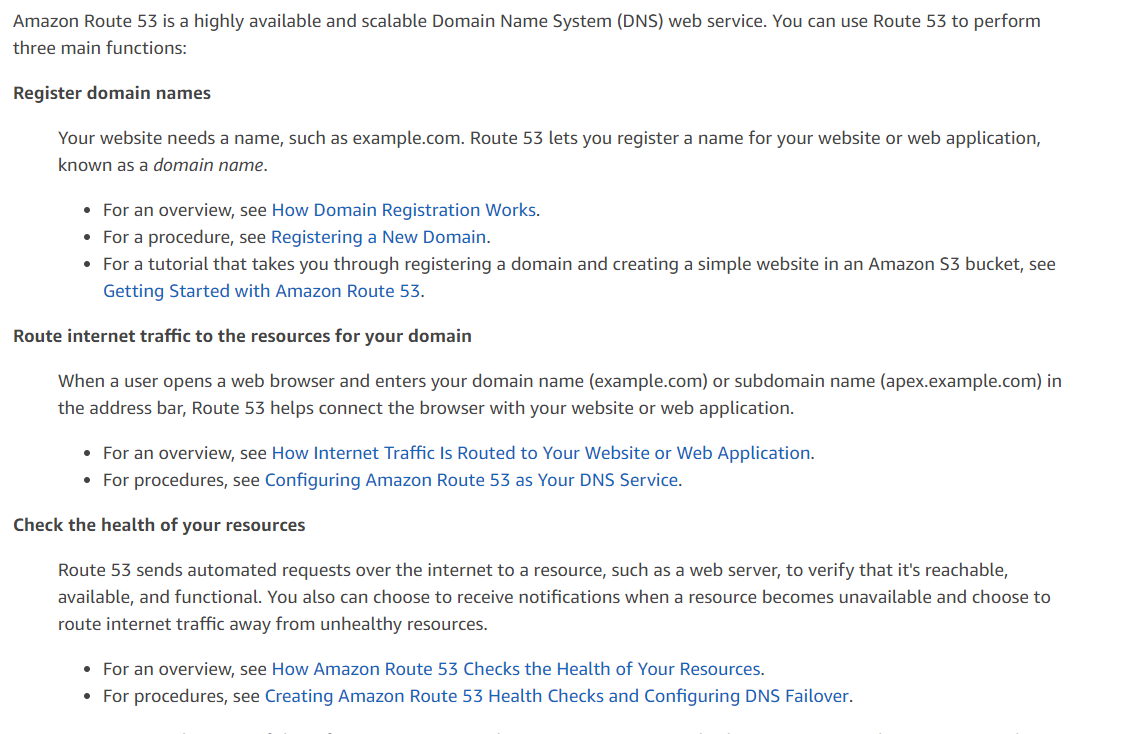Main Functions of AWS Route 53
Question
Which of the following are the main functions of AWS Route 53? (SELECT THREE)
Answers
Explanations
Click on the arrows to vote for the correct answer
A. B. C. D. E.Answer: A, B, D.
Breakdown.
Option C is incorrect because Route 53 is not used for load-balancing traffic among individual AWS resource instances (like a load balancer) rather we integrate it with resources for added functionality (https://docs.aws.amazon.com/Route53/latest/DeveloperGuide/integration-with-other-services.html)
Option E is incorrect.
In AWS, Autoscaling is used to scale underlying resources up or down based on pre-determined or dynamic factors.

AWS Route 53 is a highly scalable domain name system (DNS) service that is designed to give developers and businesses a reliable way to route end users to internet applications by converting domain names like www.example.com into IP addresses that computers use to identify each other on the internet. The service provides the following main functions:
A. Register domain names: With Route 53, you can easily register a new domain name or transfer an existing one to AWS. It provides a simple registration process and the ability to manage your domains in a single place. You can also use Route 53 to register domains that are hosted outside of AWS.
B. Route internet traffic to the resources for your domain: Route 53 lets you route traffic to your internet applications by using DNS, which maps human-readable domain names to IP addresses. Route 53 can route traffic to any AWS resource, including EC2 instances, S3 buckets, and load balancers.
C. Load-balance traffic among individual AWS resource instances: Route 53 can also act as a global load balancer, which allows you to distribute traffic across multiple AWS resources in different regions or availability zones. This helps to improve the availability and performance of your applications by distributing traffic to the resources that are closest to your end users.
D. Check the health of your resources: Route 53 can monitor the health of your resources by sending requests to them and checking for expected responses. If a resource fails a health check, Route 53 can stop routing traffic to it until it becomes healthy again. This helps to ensure that your applications are highly available and responsive.
E. Auto Scale your resources: Route 53 can also be used in conjunction with other AWS services like Auto Scaling to help you automatically scale your resources up or down in response to changes in demand. When you use Route 53 with Auto Scaling, you can automatically adjust the DNS settings for your application to reflect the current state of your resources.
